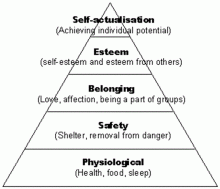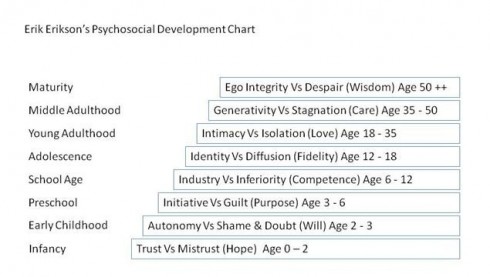Completing a MAPP (Model Approach to Partnerships in Parenting) class was the first step on our road to becoming licensed foster parents. The course took place every Monday night for ten weeks, three hours each night. It was so much information over a short period of time. We really did enjoy the class, but I also felt like my head might explode by the end of each class. Since Jesse and I are both people who take time to digest information, we though it might be helpful for us to review some highlights of things we learned at a slower pace. Plus there were extra reading materials given out each week that I didn’t have the brain power to work through at the time. So, as I review I thought I would share some of the fascinating and helpful things we learned.
 Most people are at least somewhat familiar with Maslow’s hierarchy of needs. We understand the concept that higher level needs cannot be thought about until lower level needs have been satisfied. The lowest level needs are physiological and survival needs. One can’t think about their need to make friends and feel good about themselves if they are worrying about getting enough food for their next meal.
Most people are at least somewhat familiar with Maslow’s hierarchy of needs. We understand the concept that higher level needs cannot be thought about until lower level needs have been satisfied. The lowest level needs are physiological and survival needs. One can’t think about their need to make friends and feel good about themselves if they are worrying about getting enough food for their next meal.
The same idea applies to the way that a child works through the stages of development. When a baby is born, the baby must fully rely on the fact that someone will be there to take of him. The baby learns to trust that the same person(s) will be there every time he has a need. Obviously, for a child to be coming into the foster care system that trust has been violated for one reason or another. Development of that child is pretty much on hold until he reestablishes at least a basic level of trust in a new person.
When we talk with people about our foster care plans, people tend to tell us that we will just have to learn how to not get attached to the children we care for. However, we learned that it is critical that we do form an attachment because it is the only way that the child can learn to trust us or anyone else again. This will probably be the hardest part for us, but know that we can do it.
I can’t imagine how scary and confusing it must be for a child to be picked up from their home and their parents and dropped of at a stranger’s house. When this happens the child’s attachments are broken and a grieving process begins. When an adult is going through a grieving process we give them space to deal with their grief the way they feel like they need to. While a child might have different ways of expressing their grief, we need to recognize that they are grieving and be extra patient with the behaviors and other challenges that result.



